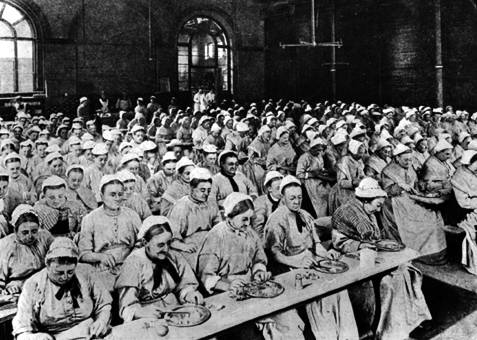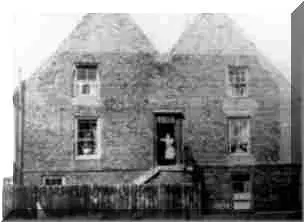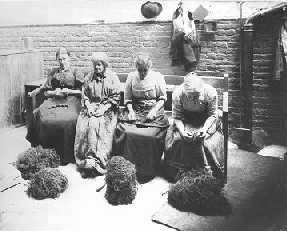During the Victorian period, there two types of asylums; one which provided a place for refuge to the poor people and was known as workhouse, and the other was mental asylum where mentally ill patients were treated.

Poor people’s shelter
A workhouse was a place that sheltered the poor people who did not have the means of supporting themselves. These workhouses along with providing a place to live also gave work to the poor people. The workhouses were functioning under the Poor Law systems prevailing in England and Wales, Scotland and Ireland.
The oldest workhouse can be traced back to 1652 though there are records which suggest that such workhouses existed even before that. The Poor Law of 1601 in England began the concept of the state providing relief to the poor and placed a legal responsibility on every parish to take care of the poor that fell within its territory. In the 17th century, the system of workhouses slowly developed.

The workhouses had captured the imagination of the Victorian writers who termed this place as pauper palaces. The Consolidated General Order monitored the workhouse functioning in terms of diet, dress, education, discipline, etc.
How was the daily life in a workhouse?
The routine of the workhouse inmate was designed in such a manner that it was harsh and degrading. The reason behind this was to only enable that person to stay in the workhouse who are genuinely poor and have no place to stay nor have any job for a living.
In the workhouse men, women and children were kept in separate quarters. The inmates were given a uniform which they had to wear during their stay at the workhouse. There were certain punishments set out by the Poor Law Commission for breaking the rules of the pauper house. The inmates were not permitted to talk to one another to maintain the discipline of the house.

The workhouses had a staff consisting of a Master, a Matron, Chaplain, Medical Officer, School teacher and a porter. The workhouses provided education to the children hoping that at least some of them will not return back to the pauper house as education will help them to fetch for some job. However, these children were made to work in factories and mines without their parents knowledge.
The working schedule in the pauper house kept the inmates busy throughout the day. Also in most of the workhouses, the living conditions were such that increased the probability of the inmates suffering from depression. The conditions of the workhouses started improving during the 19th century. Also as the years passed the workhouses were occupied by orphaned children, old people, abandoned children, deserted wives etc.
Mental asylums
During the Victorian period, a lot of changes were brought about for improving the conditions of the people living in mental asylums. The condition of the patients admitted there was bad as their treatment depended on the funds given to the asylum. Also, mentally ill patients were thought to have a spiritual problem and thus no medical help could be given to those in need.
There were reports suggesting that the inmates of the asylums were treated cruelly and were even starved. These and many other problems made it difficult for the patients to survive in those conditions and all the factors combined together drastically reduced the chances of a person to be cured.
Steps to improve the conditions had begun since the illness of George III. An important change that was made in 1828 in the case of the admission of patients was that it was necessary for two doctors to sign on the admission form of a new patient after thoroughly examining the patient.
A major breakthrough came in 1845 when county asylums were made mandatory and a separate record of the patients admitted and discharged was required to kept by the institutions.
